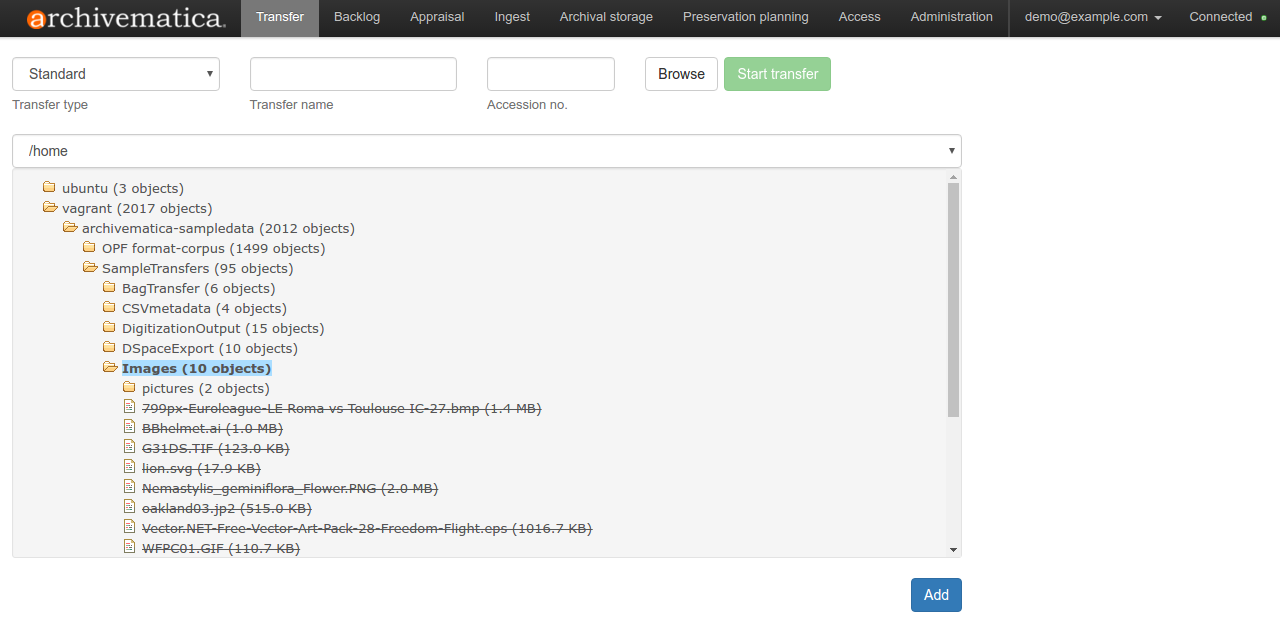Overview
Here at the Bentley Historical Library, our inventory includes substantial amounts of
moving image materials in a wide variety of obsolete formats. Additionally, we have
prioritized a number of significant moving image collections for digitization in the near
future. In order to ensure preservation and access over the long-term, we are
seeking to formalize our digitization strategy by establishing a contract with a vendor.
To initiate this process, we are writing a Request for Proposals (RFP) for moving
image digitization. One important part of the RFP is outlining detailed specifications
for the transfer of analog materials to digital files. Our main goals for developing
specifications for the RFP are to comply with community best practices as well as
meet the needs of the Library, our technical infrastructure, and our researchers.
There is currently no consensus in the library and archives community on a target
preservation format for analog video. In order to better understand current practices,
I began collecting and comparing specifications across institutions. After a thorough
online search for analog video specifications for digitization, I discovered documentation
from fourteen organizations, including university, public, and state libraries and archives,
that have made their specifications openly available. To make review and comparison of
the specification easier, common factors, such as wrapper and codec information, were
extracted and recorded in a spreadsheet. The following findings are synthesized from
the aggregated specifications.
I began collecting and comparing specifications across institutions. After a thorough
online search for analog video specifications for digitization, I discovered documentation
from fourteen organizations, including university, public, and state libraries and archives,
that have made their specifications openly available. To make review and comparison of
the specification easier, common factors, such as wrapper and codec information, were
extracted and recorded in a spreadsheet. The following findings are synthesized from
the aggregated specifications.
Findings
Specification Documentation. Presentation of specifications and terminology varied
Specification Documentation. Presentation of specifications and terminology varied
widely across institutions, however, most of the specifications themselves were very
similar. Trends emerged such as common wrapper and codec pairings, color space,
and chroma subsampling. Many institutions provided somewhat limited or incomplete
specifications compared to others. For example, a number of institutions did not include
any specifications for accompanying audio. Some specifications included multiple options
for a particular specification often citing one as preferred and another as acceptable.
Most Common Wrapper and Codec. Quicktime (.mov)/Uncompressed (v210) is the most
similar. Trends emerged such as common wrapper and codec pairings, color space,
and chroma subsampling. Many institutions provided somewhat limited or incomplete
specifications compared to others. For example, a number of institutions did not include
any specifications for accompanying audio. Some specifications included multiple options
for a particular specification often citing one as preferred and another as acceptable.
Most Common Wrapper and Codec. Quicktime (.mov)/Uncompressed (v210) is the most
commonly used wrapper and codec pairing followed by Matroska (.mkv)/ffv1 (see table and
charts below). In the past few years a growing number of institutions have adopted Matroska
(.mkv)/ffv1. This trend may be due to increased community support including active tool
development and standardization efforts as well as storage considerations.
charts below). In the past few years a growing number of institutions have adopted Matroska
(.mkv)/ffv1. This trend may be due to increased community support including active tool
development and standardization efforts as well as storage considerations.
Wrapper
|
Codec
|
Number of Institutions Using Pairing
|
Quicktime (.mov)
|
Uncompressed (v210)
|
8
|
Matroska (.mkv)
|
ffv1
|
5
|
Other pairings include: AVI/ffv1, AVI/JPEG2000, MXF/ffv1, MXF/Uncompressed or JPEG2000
| ||
File Size by Codec. The codec selected for a digitization project has a significant impact on
the amount of data produced. Some institutions choose a lossless compression, such as
JPEG2000 or ffv1 to reduce data while maintaining a faithful copy of analog source material.
Based on a blind sampling, Indiana University found that using the Uncompressed (v210)
codec produced files of approx. 100 GB per hour of content. The ffv1 codec averaged 33.2 GB
per hour. Choosing a lossless compression was expected to reduce the amount of data
produced for their entire project by approximately 65%.
the amount of data produced. Some institutions choose a lossless compression, such as
JPEG2000 or ffv1 to reduce data while maintaining a faithful copy of analog source material.
Based on a blind sampling, Indiana University found that using the Uncompressed (v210)
codec produced files of approx. 100 GB per hour of content. The ffv1 codec averaged 33.2 GB
per hour. Choosing a lossless compression was expected to reduce the amount of data
produced for their entire project by approximately 65%.
Beyond Wrapper and Codec
Frame Size and Aspect Ratio. Most institutions specified an aspect ratio of 4:3 with a
frame size of 720 x 486 for standard definition video. Some varying specifications include
a frame size of 640 x 480 (SD) or 486 x 720 and an aspect ratio derived from the source
material (“Same as source”).
Color Space and Bit Depth. Color space was always YUV/YCbCr with 4:2:2 chroma
subsampling. YUV and YCbCr are often used interchangeably, but YUV is an analog
encoding whereas YCbCr is digital. Although YCbCr is technically more accurate, YUV
is an industry accepted term and understood to mean YCbCr when referring to digital
video. The requirement for bit depth was most often 10-bit, however, a few institutions
allowed for 8- or 10-bit.
Frame Rate and Scanning. Frame rate was most commonly maintained from the analog
source, however some specified 29.97 or 30 fps. One organization required 60 fps based
on the use of interlaced scanning. Three specifications required interlaced scanning while
three others maintain original scanning. Only one organization chose progressive scanning.
Timecode and Closed Captioning. When included, specifications for timecode and
closed captioning were always to maintain the original. For time code, additional instructions
were sometimes included for adding synthetic time coding when no original exists.
Audio Specifications. When specifications for accompanying audio were included, most
Frame Size and Aspect Ratio. Most institutions specified an aspect ratio of 4:3 with a
frame size of 720 x 486 for standard definition video. Some varying specifications include
a frame size of 640 x 480 (SD) or 486 x 720 and an aspect ratio derived from the source
material (“Same as source”).
Color Space and Bit Depth. Color space was always YUV/YCbCr with 4:2:2 chroma
subsampling. YUV and YCbCr are often used interchangeably, but YUV is an analog
encoding whereas YCbCr is digital. Although YCbCr is technically more accurate, YUV
is an industry accepted term and understood to mean YCbCr when referring to digital
video. The requirement for bit depth was most often 10-bit, however, a few institutions
allowed for 8- or 10-bit.
Frame Rate and Scanning. Frame rate was most commonly maintained from the analog
source, however some specified 29.97 or 30 fps. One organization required 60 fps based
on the use of interlaced scanning. Three specifications required interlaced scanning while
three others maintain original scanning. Only one organization chose progressive scanning.
Timecode and Closed Captioning. When included, specifications for timecode and
closed captioning were always to maintain the original. For time code, additional instructions
were sometimes included for adding synthetic time coding when no original exists.
Audio Specifications. When specifications for accompanying audio were included, most
institutions required files to be: Uncompressed PCM, 48 kHz, 24-bit, with channels same as
source. Some variations include one organization specifying 2 channel audio and another
allowing for 16- or 24-bit resolution.
I hope these findings will be helpful to others who might be in the process of writing an
source. Some variations include one organization specifying 2 channel audio and another
allowing for 16- or 24-bit resolution.
I hope these findings will be helpful to others who might be in the process of writing an
RFP or selecting a preservation format for their video materials. It is important to mention
that this sampling is by no means exhaustive. I have since discovered additional specifications,
however, we found this sample size sufficient for our comparison. Feel free to get in touch with
questions or for more information about this work.
In an upcoming post, Melissa Hernández-Durán, Lead Archivist for Audio Visual Curation,
and I will write about our experiences developing metadata requirements for moving image
digitization. Stay tuned!
that this sampling is by no means exhaustive. I have since discovered additional specifications,
however, we found this sample size sufficient for our comparison. Feel free to get in touch with
questions or for more information about this work.
In an upcoming post, Melissa Hernández-Durán, Lead Archivist for Audio Visual Curation,
and I will write about our experiences developing metadata requirements for moving image
digitization. Stay tuned!






























